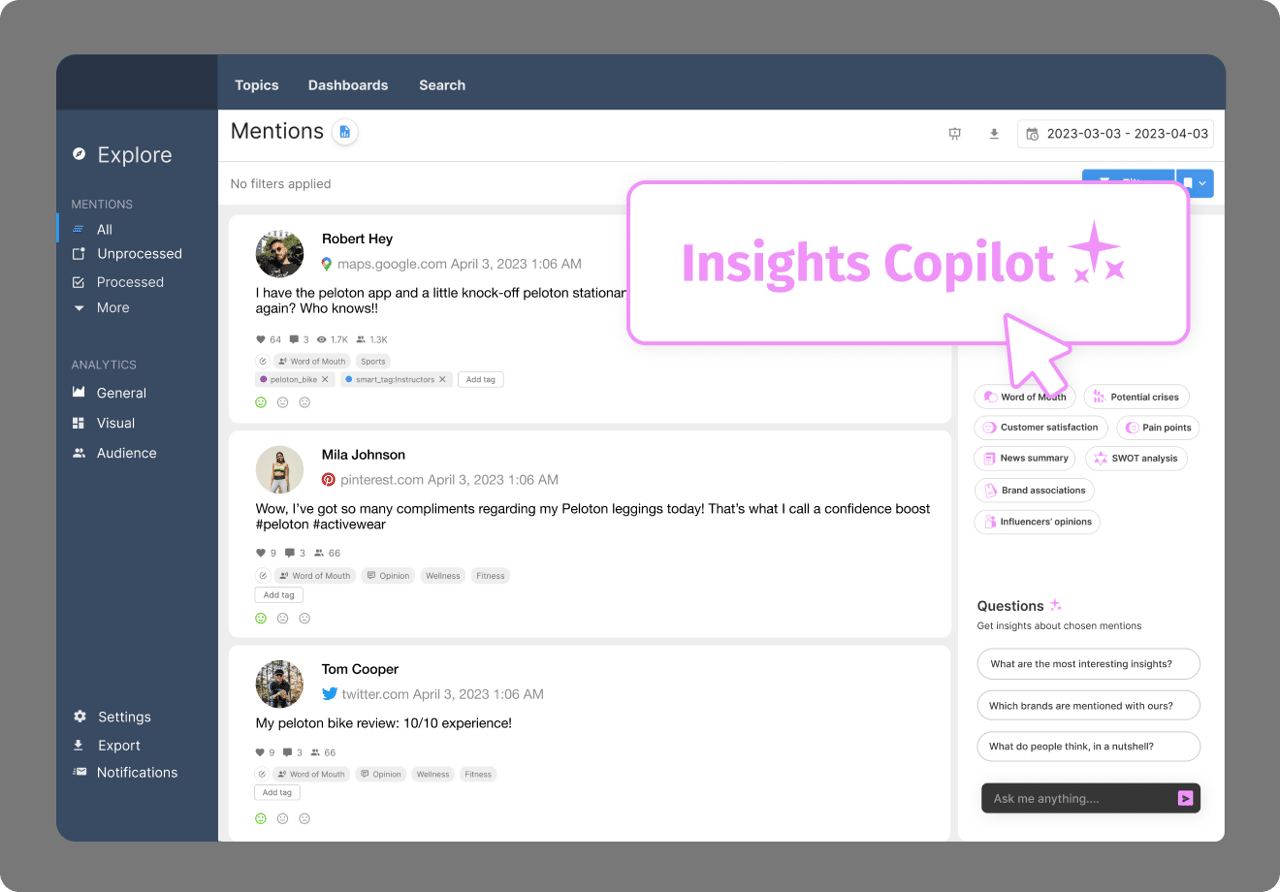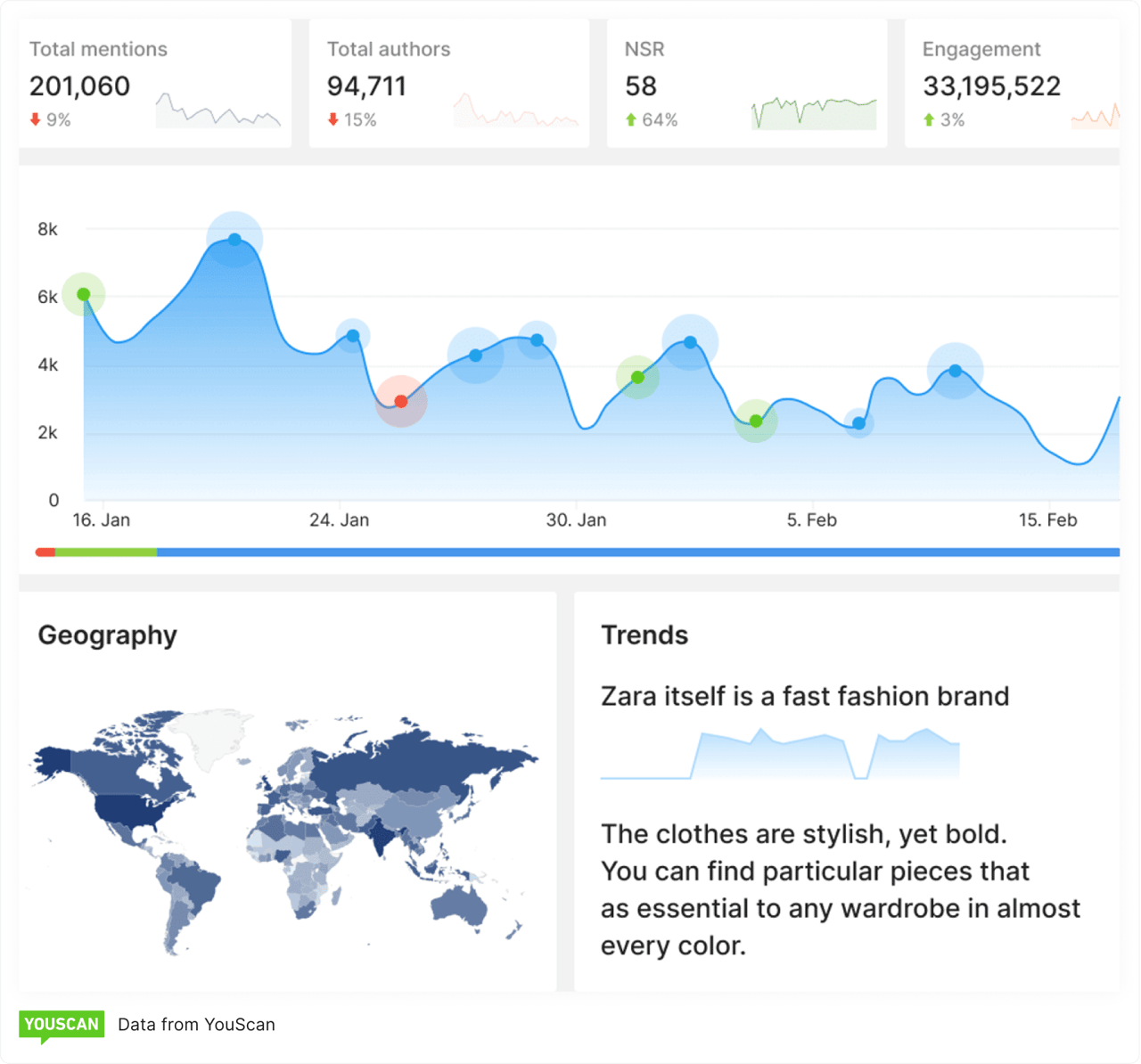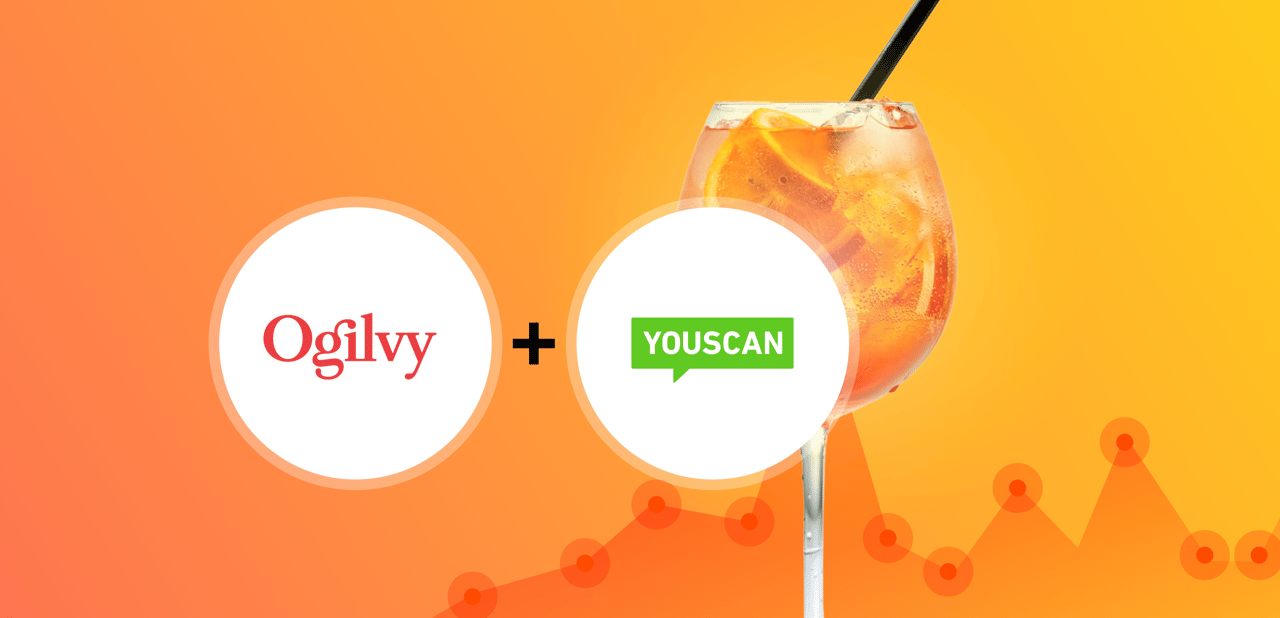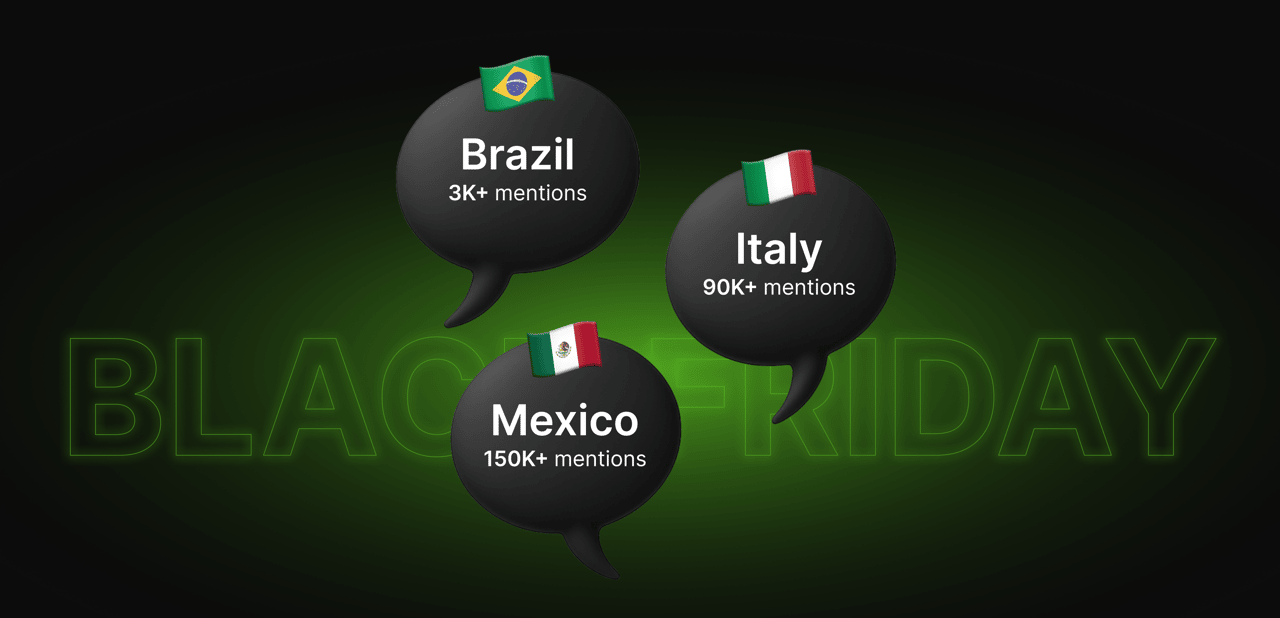Latest Trends in Marketing Metrics (2025): Beyond Vanity Numbers to Real Business Impact
.png)
Marketing metrics in 2025 look nothing like they did three years ago. We're living through the biggest shift in measurement since digital marketing began, and it's happening fast.
What's driving this change? Three major forces are reshaping how marketing professionals measure success: stricter data privacy regulations that limit traditional tracking, AI tools and machine learning algorithms that can analyze deeper patterns, and the explosion of visual content across social media platforms that requires new measurement approaches.
Brand awareness metrics, including mentions, sentiment, and branded search, rank as the most valuable in 2025. Yet 10% of marketers have access to real-time brand data, according to Adobe's latest marketing analytics research.
This gap between what matters and what's measured represents the biggest opportunity for marketing teams willing to adapt their marketing strategies. With that in mind, let’s break down the latest trends in marketing metrics to be always prepared for what’s coming on the digital horizon.
What makes marketing metrics change now
The foundation of marketing measurement is cracking, and smart marketing leaders are already rebuilding on stronger ground.
Data privacy regulations like GDPR and the death of third-party data have killed many traditional tracking methods. Marketing teams that relied on detailed customer tracking through website pixels and cross-platform data collection are scrambling to find alternatives that respect user privacy while still delivering insights about customer interactions.
Artificial intelligence has simultaneously created problems and solutions. AI tools can now process massive amounts of unstructured data, such as social media posts, images, video advertising content, and customer feedback, to extract sentiment and behavioral patterns that were impossible to measure manually. But this same technology has made it easier to create fake engagement, making traditional metrics like likes and shares less reliable indicators of genuine user behavior.
The rise of visual content changes everything about measurement. When your customers share photos wearing your products without tagging your brand, traditional social media monitoring misses these valuable mentions entirely.
Visual social listening tools that can recognize logos, products, and brand elements in images are becoming fundamental for accurate measurement across various marketing channels.
Platform fragmentation makes unified measurement harder but more important. Your customers might discover your brand on TikTok, research on Instagram, discuss it in private messaging apps, and make purchase decisions on entirely different platforms.
Marketing analytics trends now require tools that can connect these scattered touchpoints into coherent customer journeys while providing insights into customer satisfaction at each stage.
Key emerging metrics you should be tracking
The measurement landscape has shifted, and the metrics that matter most in 2025 look fundamentally different from what filled dashboards three years ago. While traditional metrics counted actions, modern metrics measure emotion, authenticity, and real influence.
These emerging indicators don't just track what's happening—they predict what's coming and reveal why customers make the choices they do. Let's see which metrics every marketer should track in 2025.
Sentiment and Net Sentiment Rate (NSR)
-1760004353.png)
-1760004353.png)
While traditional metrics count mentions, NSR measures the emotional tone behind every conversation about your brand.
Think of NSR as the marketing world's version of Net Promoter Score, but applied to all organic customer conversations rather than just surveys. It calculates the percentage of positive mentions minus negative mentions, giving you a single number that reflects true brand health.
Why does emotional tone matter more than volume? Because a brand with 1,000 positive mentions will always outperform one with 10,000 negative mentions in terms of customer acquisition, retention, and lifetime value. Consumer behavior research consistently shows that sentiment drives purchase decisions more than awareness alone, making it a critical component of effective marketing strategies.
The YouScan sentiment analysis tools go beyond simple positive/negative classification. The platform analyzes context-specific nuances, emoji usage, and subtle indicators that basic sentiment tools miss, providing marketing teams with granular emotional insights that translate directly to business outcomes and help optimize ad campaigns.


Share of Conversation and Share of Voice
Share of Conversation measures how much of the relevant discussion in your industry mentions your brand compared to competitors. It's like market share, but for attention and mindshare rather than sales.
This metric reveals gaps between your marketing efforts and actual customer awareness. You might be spending 40% of category advertising but capturing only 15% of organic conversations—a clear signal that your content marketing and social media strategy aren't resonating with your target audience across different marketing channels.
YouScan also provides competitor analysis tools to track Share of Conversation across all social media platforms, forums, review sites, and news sources. For marketing teams, this means they can identify white space opportunities, understand competitor weaknesses, and optimize their own messaging to capture more mindshare while gaining a competitive advantage.
Word-of-Mouth mentions (WOM)


Authentic word-of-mouth mentions represent the holy grail of modern marketing metrics. These are genuine customer recommendations, complaints, and discussions that happen without any prompting from brands or influencers.
WOM mentions predict future trends better than any other marketing metric because they represent real customer sentiment and purchase intent. When people voluntarily discuss your product with friends, family, or online communities, they provide unpaid marketing that carries more credibility than any advertising campaign, directly influencing purchase history and customer behavior patterns.
The challenge lies in identifying genuine WOM versus sponsored content, influencer posts, or brand-generated content. Advanced social listening tools like YouScan use machine learning and predictive analytics to filter out promotional content and identify authentic customer conversations that drive real business value.
Brand Presence and Total Mentions Over Time
Brand presence tracking measures the total volume of online conversations mentioning your brand across all platforms and sources. While volume alone doesn't tell the whole story, tracking mentions over time reveals important patterns about awareness, campaign performance, and market trends.
YouScan's brand health tracking delivers complete visibility into mentions spanning social platforms, news outlets, blog content, discussion forums, and customer review sites. Marketing teams could leverage these insights to evaluate how far campaigns reach, spot emerging topic patterns, and compare their brand's visibility against competitive benchmarks. The result?
Marketing reports that clearly communicate tangible business value to leadership while empowering teams to base their strategic planning on solid data rather than guesswork. This helps create marketing reports that demonstrate real impact to stakeholders and enables marketers to make data-driven decisions about future marketing plans.
Influence Score and Author Metrics
A recommendation from an industry expert or respected community member carries more weight than a random social media post, even if both reach the same number of people.
Influence metrics measure the authority and reach of people discussing your brand. This includes traditional influencers but extends to industry experts, satisfied customers with strong networks, and thought leaders in relevant communities. Understanding these patterns helps marketing industry professionals identify trends and leverage AI to amplify their reach.
The YouScan target audience analysis looks at author metrics, including follower count, engagement rates, topic expertise, and audience demographics. How could marketers use this data? Easy! To identify potential brand ambassadors, understand their audience composition, and prioritize relationship-building efforts that drive customer acquisition and retention strategies.


Aspects and Topic-Level Sentiment Analysis
Aspect-based sentiment analysis breaks down customer feedback into specific product or service features, revealing exactly what people love or hate about your brand. Instead of general positive or negative sentiment, you get granular insights about pricing, quality, design, customer service, and other key aspects.
This metric transforms vague feedback into actionable insights. If customers consistently praise your product quality but complain about customer service response times, you know exactly where to invest improvement efforts. Many marketers use this approach to identify trends and optimize their content strategy based on real customer feedback.
YouScan offers an Aspects feature that automatically categorizes mentions by topic and applies sentiment analysis to each category. Marketing teams use this data to optimize messaging, prioritize product development, and address specific pain points before they impact broader brand perception. This data science approach helps collect data more efficiently than traditional measurement methods.
Potential Reach and Source Distribution
Potential reach measures how many people could theoretically see mentions of your brand, while source distribution shows which platforms and websites generate the most brand conversations. Together, these metrics help optimize content strategy and media spend allocation.
Social media monitoring tools like YouScan track mention distribution across hundreds of platforms. Marketing teams rely on these insights to determine which platforms deserve more budget and attention while spotting channels that fail to deliver results. This data-driven approach enables smarter automation decisions and strengthens how audiences connect with brands across every point in the customer journey.
How YouScan enables these trends — Features that matter


Modern marketing measurement requires tools built for today's complex digital environment. YouScan provides the infrastructure marketing teams need to track emerging metrics while maintaining the speed and accuracy that competitive markets demand.
Here are the features every marketer needs:
Social listening with visual insights is one of the key strengths of YouScan. The platform's AI-powered image recognition detects your brand in photos and videos even when users don't tag your account or mention your name. This visual listening capability captures more brand mentions than text-only monitoring tools, enabling marketers to understand the full scope of their brand's digital presence.
Custom dashboards and automated reports solve the common problem of data overwhelm. Marketing professionals can configure specific metric combinations, set automated alerts for significant changes, and generate stakeholder reports focusing on business outcomes rather than vanity metrics. This approach helps marketing leaders make informed decisions about their SEO strategy and digital marketing trends.
Audience insights reveal who's discussing your brand beyond basic demographics. YouScan analyzes interests, occupations, lifestyle indicators, and social connections to help marketing teams understand their true audience composition and identify expansion opportunities. With this data, you can optimize your email marketing campaigns and social media posts for maximum impact.
Aspect analysis and filtering transform unstructured feedback into structured business intelligence. The platform automatically categorizes mentions by topic, sentiment, and relevance, allowing marketing teams to drill down into specific product features or customer service issues. Thanks to it, digital marketers can analyze data more effectively than traditional Google Analytics approaches.
Competitor analysis and Share of Conversation tools provide market context that most social listening platforms miss. Through comprehensive competitive intelligence, marketing professionals can benchmark their performance against competitors and identify successful competitor strategies. This helps identify market trends and optimize marketing technologies for better performance across social media accounts.
Metrics that are losing relevance or becoming less useful
The metrics that dominated marketing dashboards for the past decade are rapidly becoming meaningless or even misleading. Smart marketing leaders are already moving away from these outdated measurements.
Follower count and page views represent the most obvious vanity metrics, losing relevance. These numbers can be artificially inflated through bot purchases, paid promotion, or engagement pods, making them poor predictors of actual business impact. Marketing professionals need more data points that reflect genuine customer interactions.
Likes, shares, and basic engagement metrics are becoming less reliable as platforms change their algorithms and AI tools make fake engagement easier to generate. A post with 10,000 likes might generate zero leads, while content with 10 genuine comments drives significant revenue. Understanding customer behavior requires analyzing data beyond surface-level interactions.
Impression-based metrics lose meaning in an environment where ad blockers, bot traffic, and viewability issues create massive gaps between reported and actual human exposure. Marketing professionals need metrics that measure actual human attention and behavioral response while respecting data practices and privacy requirements.
Influencer metrics disconnected from business outcomes waste substantial marketing budgets. Follower counts, engagement rates, and cost-per-post mean nothing without corresponding measurements of brand lift, sentiment improvement, or sales attribution. The most successful campaigns focus on genuine customer interactions and technical expertise rather than vanity numbers.
How to pick the right metrics for your brand
Choosing effective marketing metrics starts with assessing your business goals and current measurement capabilities. Not every metric matters for every brand, and trying to track everything leads to analysis paralysis.
Start by aligning metrics with specific business objectives. Awareness-stage companies need different measurements than established brands focused on retention or premium positioning. Early-stage brands might prioritize share of conversation and sentiment growth, while mature companies focus on customer lifetime value and competitive benchmarking across the marketing landscape.
At YouScan, we have a brand health tracker that helps establish baseline measurements across all key metrics and tracks changes over time to identify what drives real business results. Most successful implementations focus on 3-5 core metrics supplemented by secondary indicators that provide insights into future trends and customer feedback patterns.
Use audience segmentation to understand how different customer groups respond to various marketing approaches. The YouScan demographic and psychographic analysis reveals patterns that help optimize targeting and messaging for maximum effectiveness across different social media management strategies.
Regular review and adaptation ensure your measurement system evolves with changing market conditions, customer behavior, and business priorities. The latest trends in marketing metrics require flexible measurement approaches that can adapt to new platforms and customer behaviors while enabling marketers to collect data effectively and identify future trends.
Case studies and examples
Real-world applications demonstrate how shifting from vanity metrics to impact-focused measurement transforms marketing campaigns and business results. Let's take a look at how three brands used YouScan to improve their marketing efforts.
Thinky, a creative influencer marketing agency, used YouScan's social listening capabilities to identify trend patterns that traditional app analytics missed. Through social listening, it discovered the main brand promoters and food enthusiasts. YouScan also helped the company identify how its target audience related to food every day.
Tangamanga, part of the Mexican food brand group Sigma, leveraged our real-time analysis, image recognition, and TikTok monitoring to detect a viral moment. They tracked what TikTok users were talking about and used it to create a TikTok video that generated thousands of memes, reactions, and brand mentions.
Suzuki Guatemala used YouScan to connect its brand with the local motorcycle community. With our Audience Insights, the team identified subcommunities within its target audience. They discovered people who love painting, poetry, and reading, and launched campaigns that spoke to their interests.
Actionable steps to get started
Transforming your marketing measurement approach requires systematic planning and gradual implementation rather than sudden wholesale changes:
Step 1: Audit your current metrics by categorizing them into vanity metrics, tactical indicators, and strategic business metrics. Most marketing teams discover they're tracking too many meaningless numbers while missing crucial strategic insights.
Step 2: Configure comprehensive social listening through the platform, such as YouScan, to establish baseline measurements for sentiment analysis, competitor comparison, and audience insights across all relevant platforms and sources.
Step 3: Implement alert systems for significant changes in sentiment, mention volume, competitive activity, and crisis management alerts. Automated alerts help marketing teams respond quickly to opportunities and threats while focusing on long-term strategic goals.
Step 4: Use audience insights to refine content marketing and brand partnerships. The YouScan demographic and psychographic analysis reveals who engages with your brand versus marketing assumptions.
Step 5: Establish regular review cycles for monthly tactical adjustments and quarterly strategic evaluation. Monthly reviews focus on campaign performance, while quarterly sessions evaluate metric relevance and competitive position.
Key takeaways
The measurement revolution in marketing isn't coming—it's already here. Companies that adapt quickly to sentiment-driven, conversation-focused, and visual metrics will gain sustainable competitive advantages while others struggle with outdated measurement approaches.
The biggest shifts in the latest trends in marketing metrics center on emotional intelligence over volume metrics, authentic engagement over manufactured interactions, and comprehensive customer insight over platform-specific performance indicators. These changes reflect broader market maturation where customer experience and brand trust matter more than advertising reach.
Ready to revolutionize your approach? The YouScan's features transform scattered online conversations into strategic business intelligence, helping marketing teams make data-driven decisions that drive real growth.
FAQs
What are some marketing trends right now?
Current marketing trends include AI-generated content, visual content dominance, privacy-first data collection, authentic influencer partnerships, and real-time customer feedback integration into product development. The latest trends in marketing metrics focus on sentiment analysis and visual social listening.
What are the 7 Ps of marketing?
The 7 Ps of marketing are Product, Price, Place, Promotion, People, Process, and Physical Evidence. These elements form the foundation of a comprehensive marketing strategy across both digital marketing and traditional channels.
What is an emerging trend in marketing?
Visual social listening represents a major emerging trend in the latest trends in marketing metrics, using artificial intelligence to analyze images and videos for brand mentions, logo detection, and product usage patterns that traditional text-based monitoring misses entirely.
What are the 7 C's of digital marketing?
The 7 C's of digital marketing are Content, Context, Community, Customization, Communication, Connection, and Commerce. These principles guide effective digital marketing strategies and customer engagement across social media platforms and online channels.



